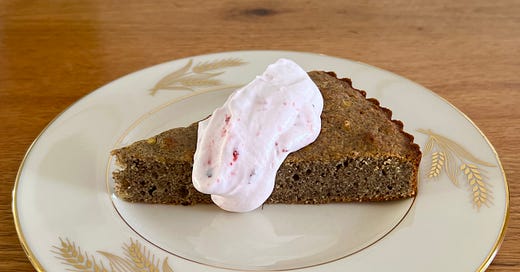Buckwheat — with its nutty, grainy flavor that has something green about it — is an outlier. With its heart-shaped leaves and clusters of small white flowers (I got to know the plants when I grew it as a garden cover crop), it’s not actually a grain but a pseudocereal, like quinoa, amaranth, and chia. The tetrahedral shape of the seeds recalls that of beech nuts, which gives the name: buck, via Middle Dutch, means “beech.” It’s not easy to breed buckwheat, so in yield it was long ago overtaken by wheat. And where wheat contains gluten, which helps to raise bread and cakes, buckwheat has none. It likes a moist, cool climate, but even a light frost kills it, so it’s planted late. Then it grows quickly; a crop is ready in just ten to twelve weeks. Often, once, it was grown by poor people, because it doesn’t require fertilizer or rich soil. And it has few insect and disease problems, so it’s easy to grow organically. The harvested seed is sometimes roasted, becoming kasha. Buckwheat makes Russian blini, Breton galettes, Chinese and Japanese soba, Italian pizzoccheri, crespelle, and polenta, Indian kuttu ki roti (buckwheat chapattis), and West Virginia sour buckwheat pancakes, for a start.
© 2025 The Art of Eating
Substack is the home for great culture





